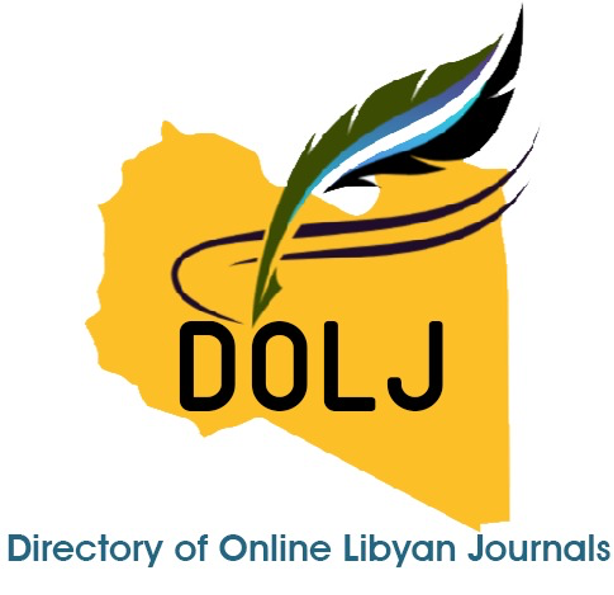دراسة تأثير تشتت نمط الاستقطاب والفقد المعتمد على الاستقطاب على بارامترات الأداء في أنظمة اتصالات الألياف البصرية
DOI:
https://doi.org/10.36602/jsba.2023.16.102Keywords:
الألياف البصرية, تشتت نمط الاستقطاب, الفقد المعتمد على الاستقطاب, معدل الخطأ النبضي, عامل الجودة, نسبة الإشارة البصرية للتشويشAbstract
In this research, the effect of polarization dependent loss of signals entering fiber optic communication systems on the efficiency of the signals output through the model of wave carriers passing through single mode optical fibers was studied, taking into account the dispersion in the waves passing through the optical fiber caused by chromatic dispersion and the polarization pattern of the waves passing through the optical fiber according to the physical laws of fiber optic physics that work to show the signal coming out of the fiber optic communication system with a certain efficiency. This is done through our study of the effect of polarization loss (PDL) on the pulse error rate (BER) in fiber optic systems. In addition, the effect of polarization loss on the calculation of the pulse error rate (BER) of the outgoing signals was studied .It was found that with increasing polarization loss (PDL) and increasing polarization pattern dispersion (PMD), the pulse error rate (BER) increases, and the best value (BER) is when it is (PDL=0dB and PMD=2ps), and the effect of polarization loss on the quality factor (Factor-Q) was studied, and we found that with increasing polarization loss (PDL) and increasing polarization pattern dispersion (PMD), the quality factor (QFactor) decreases. In addition, the effect of polarization loss on the signal-to-noise ratio received in receivers (OSNR) was studied, and the study showed that with increasing polarization loss (PDL) and increasing polarization pattern dispersion (PMD), the optical signal to noise ratio (OSNR) decreased. The study showed that the best value (Q-Factor) and the pulse error rate as well as the optical signal ratio for noise when (PDL=0dB and (PMD=2ps). All calculations in this research were performed using MATLAB.
References
1- Shahada al Mwssa, Moieen Yonees, Weal Hassan sakr, “DMT Modulation is the Best Option for Digital Subscriber Line VDSL”, Journal for Studies Scientific Research-Engineering Sciences Series Vol.28, No.2, 2006.
2- Rouba Daoud, “Studying and Analyzing the modulators and Demodulators of PCM”, Tishreen University Journal for Studies Scientific Research-Engineering Sciences Series Vol.40, No 4, 2018.
3- Sudhir Babu, K.v Sambasiva Rao, “ Evaluation of BER for AWGN, Rayleigh and Rician Fading Channels under Various Modulation Schemes”, International Journal of Computer Applications” Vol. 26 ,No.9,July 2011.
4- N.Gisin, “The statistics of polarizationdependent loss” Opt,Commun, vol.144,pp.399-405,1995.
5- A.Mecozzi and M.shtaif, “The statistics of polarization-dependent loss in optical communication systems”, IEEE Photon. Techonol. Lett, vol.14, 2002.
6- Zhongxi Zhang, Liang Chen, Xiaoyi Bao “Accurate BER evaluation for lumped DPSK and OOK systems with PMD and PDL” OPTICS EXPRESS Vol. 15, No. 15, 2007.
7- Farhan Hussain and M.S.Islam “Limitation Imposed by PolarizationDependent Loss on a Fiber Optic Communication System”, Engineering and Technology International Journal of Electronics and Communication Engineering, Vol:4, No:8, 2010.
8- Maxim Kuschnerov, Mohamed Chouayakh, Kittipong Piyawanno, Bernhard Spinnler, Mohammad S. Alfiad,Antonio Napoli, and Berthold Lankl, “On the Performance of Coherent Systems in the Presence of PolarizationDependent Loss for Linear and Maximum Likelihood Receivers” IEEE PHOTONICS TECHNOLOGY LETTERS, VOL. 22, NO. 12, JUNE 15, 2010.
9- Yangzi Liu, Peter Shepherd and Duncan Allsopp, “Polarization Dependent Loss Emulator Built with Computer-driven Polarization Controllers and Single Mode Fibre”, In Proceedings of the 6th International Conference on Optical Communication Systems (OPTICS-2015), pages 42-47.
10- Brian T. Kirby, Daniel E. Jones, and Michael Brodsky, “Effect of Polarization Dependent Loss on the Quality of Transmitted Polarization Entanglement”, J. OF LIGHTWAVE TECHNOLOGY, VOL. 37, NO. 1, 2019.
11- Jahangir Alam S. M., M. Rabiul Alam. Hu Guoqing, Zakirul Mehrab, “Improvement of Bit Error Rate in Fiber Optic Communications”, International Journal of Future Computer and
Communication,Vol.3,No.4, August 2014.
12- M.A O thaman ,M,M,Ismail “erbium doped fiber amplifier (EDFA) for C –band optical communication system, JETIJENS 2012.
13- span katiyar, “Optical Communications”, frist edition, New Delhi,2010.
14- A.Cem COKRAK ,Ahmet ALTUNCU” Gain and noise performance of erbium doped fiber amplifier, “J. OF ELECTRONIC ENGINEERING,2004.
15- Silvano Donati, Guido Giuliani, “Noise in an Optical Amplifier:Formulation of a New Semiclassical Model”,IEEE J.OF QUANTUM ELECTRONICS, VOL.33,NO.9,1997.
16- Rajdi AGALLIU, Michal LUCKI, “BENEFITS AND LIMITS OF MODULATION FORMATS FOR OPTICAL COMMUNICATIONS”, OPTICS AND OPTOECTRONICS,VOL.12, No. 2,2014.
17- Farhan Hussain and M.S.Islam “Limitation Imposed by PolarizationDependent Loss on a Fiber Optic Communication System”, Engineering and Technology International Journal of
Electronics and Communication Engineering, Vol:4, No:8, 2010.
18- Zhongxi Zhang, Liang Chen, Xiaoy Bao, “Moment-generating function method used to accurately evaluate the impact of linearized optical noise amplified by EDFAs”, arxiv:1207.3362v2 [physics. optics]18Jun 2013.
19- T. S. Khatavker, D.S.Bormane, “OSNR CHALLENGE IN DWDMLINK ”,INTERNATIONAL JOURNAL OF ELECTRONICS AND COMMUNICATION ENGINEERING AND TECHNOLOGY(IJECT),Vol. 5, No.2, (2014).
20- Stamatios V. Kartalopoulos, “FREE SPACE OPTICAL NETWORKS for UltraBroad Band Services”,Johan and Sons, Inc., Hobken,2011.
21- Mohamed Elbawab, Mohamed Abaza and Moustafa H. Aly,“Relay Selection Schemes for FSO Communications over Turbulent Channels”, 2018.
22- EDWARD COLLETT, “POLARIZED LIGHT IN FIBER OPTICS”, Library of Congress Cataloging-in-Publication Date 2003.
23- Abdelkerim Amari, Octavia A. Dobre, Ramachandran Venkatesan, O.S.Sunish Kumar, Phihippe Ciblat, and Yves Jaouen“ A survey on fiber nonlinearity compensation for 400 Gbps and beyond
optical communication systems”, 2017.














